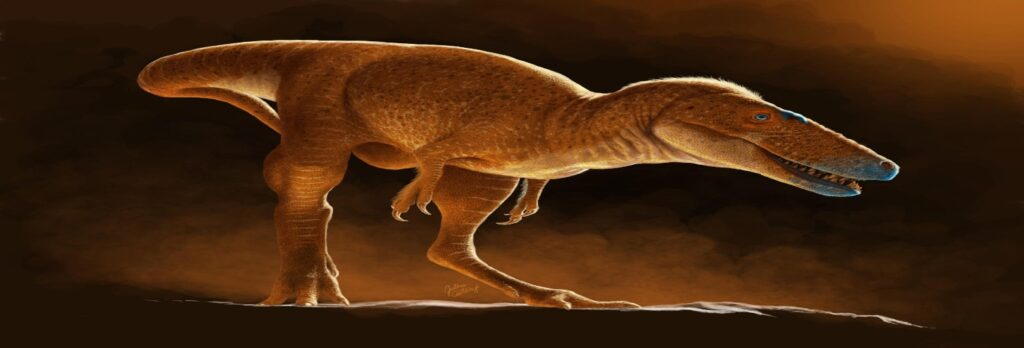A new species of tyrannosauroid dinosaur, Khankhuuluu mongoliensis, also called the “Dragon Prince,” has been officially identified from fossils found in Mongolia, offering new insights into the evolution of the famous Tyrannosaurus rex.
About Khankhuuluu Mongoliensis
- Khankhuuluu mongoliensis lived around 86 million years ago during the Late Cretaceous period.
- The fossils were originally discovered in the 1970s in the Gobi Desert, Mongolia, but were only recently confirmed as a distinct species through modern analysis.
- The name translates to “Dragon Prince of Mongolia.”
Features
- It was a medium-sized carnivore, weighing around 750 kg, about the size of a horse.
- It measured around 4 meters long, much smaller than its descendant, T. rex.
- It had a long, low skull, small horn-like structures, and a lightweight, agile build.
- Unlike the massive, bone-crushing T. rex, it was a mesopredator, using speed and agility to hunt smaller animals.

Importance of the Discovery
- Khankhuuluu is considered the closest known ancestor of T. rex.
- It helps fill a gap in the evolutionary record, showing how tyrannosaurs evolved from smaller predators into giant apex hunters.
- The discovery supports the theory that tyrannosaurs originated in Asia and later migrated to North America, where they became dominant predators.
- This species marks a crucial evolutionary step in the rise of the tyrannosaur lineage.
Conclusion
The identification of Khankhuuluu mongoliensis provides critical evidence about the early evolution and migration of tyrannosaurs, deepening our understanding of dinosaur ancestry and prehistoric life.





